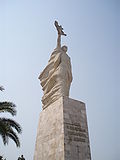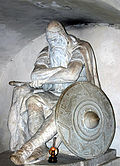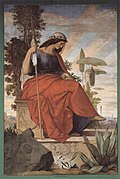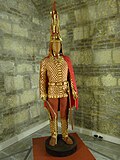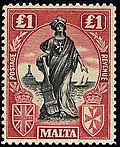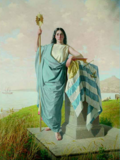

A national personification is an anthropomorphic personification of a state or the people(s) it inhabits. It may appear in political cartoons and propaganda. In the first personifications in the Western World, warrior deities or figures symbolizing wisdom were used (for example the goddess Athena in ancient Greece), to indicate the strength and power of the nation. Some personifications in the Western world often took the Latin name of the ancient Roman province. Examples of this type include Britannia, Germania, Hibernia, Hispania, Lusitania, Helvetia and Polonia.
Contents
Examples of personifications of the Goddess of Liberty include Marianne, the Statue of Liberty (Liberty Enlightening the World), and many examples of United States coinage. Another ancient model was Roma, a female deity who personified the city of Rome and her dominion over the territories of the Roman Empire. [1] Roma was probably favoured by Rome's high-status Imperial representatives abroad, rather than the Roman populace at large. In Rome, the Emperor Hadrian built and dedicated a gigantic temple to her as Roma Aeterna ("Eternal Rome"), and to Venus Felix , ("Venus the Bringer of Good Fortune"), emphasising the sacred, universal and eternal nature of the empire. [2] Examples of representations of the everyman or citizenry in addition to the nation itself are Deutscher Michel, John Bull and Uncle Sam. [3]
Italia turrita (lit. 'Turreted Italy'), the allegorical personification of Italy, appears as of a young woman with her head surrounded by a mural crown completed by towers (hence turrita or "with towers" in Italian). It is often accompanied by the Stella d'Italia ('Star of Italy'), which is the oldest national symbol of Italy, since it dates back to the Graeco-Roman tradition, [4] from which the so-called Italia turrita e stellata ('turreted and starry Italy'), and by other additional attributes, the most common of which is the cornucopia. The allegorical representation with the towers, which draws its origins from ancient Rome, is typical of Italian civic heraldry, so much so that the mural crown is also the symbol of the cities of Italy. The origin of the turreted woman is linked to the figure of Cybele, a deity of fertility of Anatolian origin, in whose representations she wears a wall crown. [5] Its most classic aspect derives from the primordial myth of the Great Mediterranean Mother.











